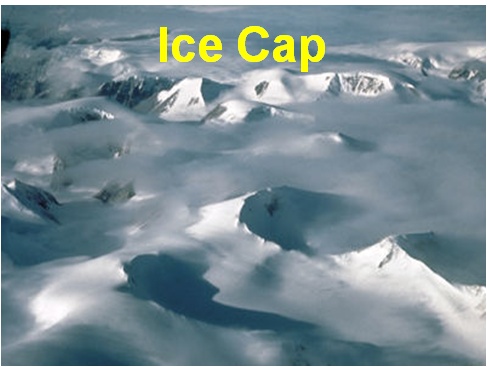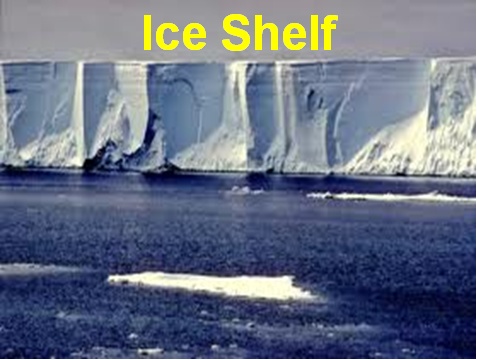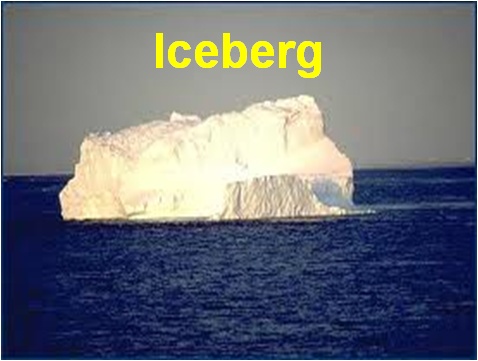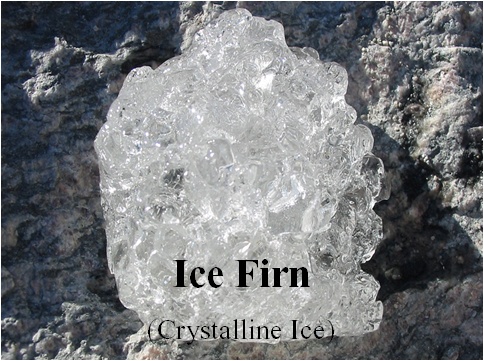- Glaciers contain enormously large quantities of fresh water that if both are melted, global sea levels would rise by over 100 meters. Portion of an Ice Sheet or Ice Cap that extend into the water is called Ice Shelf. Narrow, fast moving sections of an ice sheet are Known as,Ice Stream.


- In Antarctica, many ice streams merge into large Ice Shelves As the ice reaches the sea, pieces break off or calve, forming the Ice Bergs. Most tide-water glaciers calve above sea level which often results in a tremendous impact as the iceberg strikes the water.

- Thermally, a Temperate Glacier is at melting point in the whole year. The ice in the polar glaciers (usually of North Pole) is always below freezing point from the surface to its base.
- Formation: Glaciers are formed where the accumulation of snow and ice surpasses Ablation. If a mass of snow and ice is very thick; it begins to move due to a combination of surface slope and force due to the load.
- In Temperate Glaciers, ice repeatedly freezes and thaws, changing it into granular ice called Firn (partially consolidated, granular snow that has passed through one summer-melt season but has not yet become the glacial ice. It is also called Old Snow)

- Under the pressure of the layers of ice above it, this granular ice fuses into denser and denser firn. Over a period of years, it undergo further compaction and becomes glacial ice. Glacier ice is slightly less dense than ice formed from the frozen water because later contains tiny trapped air bubbles
- Glacial ice has its distinctive blue tint because it absorbs the red light due to an overtone (having a frequency that is a multiple of the fundamental frequency) of the infrared due to the O-H bonding mode of the water molecule. Liquid water appears blue due to the same reason.



